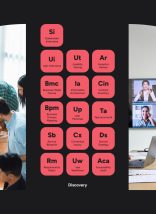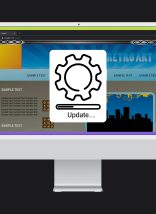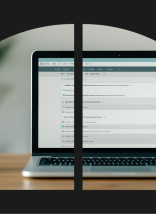If you’re contemplating changes to your website, it’s crucial to first understand the web design cost associated with making those changes. This understanding will allow you to calculate the potential return on investment (ROI), helping you determine whether the proposed changes will be beneficial to your bottom line.
The average lifespan of a website is 3-5 years. After this period, aspects such as design and device compatibility may become obsolete. However, Atlantic BT has seen websites last much longer. That’s because these custom web projects include ongoing maintenance:
- Framework updates
- Updates to underlying software packages
- Server hardware updates (or migrating to AWS with a well-architected framework and careful attention to workload-specific services)
- Continued design and user experience tweaks based on data
It takes a continued investment to maintain a reliable, secure, and performant website. In reality, these long-lasting websites have never really never stopped the development and improvement process. We like to implement new technologies and constantly experiment to stay current.
Is experimenting with new technologies worth the investment?
You are faced with two options: overhauling your website every 3-4 years or investing in continuous enhancements. Your decision ultimately depends on which option gives you the highest ROI.
Let’s say you are at year 2 and start to see the benefits in switching your platform. How should you calculate ROI for the investment?
Frame your mindset in three simple questions:
1. How much does my website impact my revenue currently?
It can be challenging to measure revenue if you aren’t directly selling products online. In businesses outside of eCommerce, it usually boils down to analytics and recognizing patterns in inbound leads.
Do 100% of your leads come in digitally? How does word-of-mouth impact your leads? Are you doing any other non-digital or traditional marketing?
2. Is my website an important tool in my strategy going forward?
What is my digital strategy moving forward, and how does my website play into it? Will you be driving ads to landing pages, hosting whitepapers, or creating a login portal for customers to self-serve?
Take some time and determine how much your website will contribute to revenue growth.
3. What are the opportunity costs of waiting?
Now that you have determined how you will leverage your website, calculate the opportunity cost of going through your strategy with outdated technology aging web designs or a poor user experience.
Would you benefit from going headless? What will happen if you skip Drupal 10? Will your WordPress site face security risks from skipping the next update? Do you have a way to draw insights without a custom dashboard? Are customers using a mobile device to access my website?
Recognize hidden opportunity costs.
Answering these questions is just the beginning of the journey as the need for change on digital platforms gains momentum. Here is a breakdown of opportunity costs we see companies missing when they wait too long to update.
Next-level technology becomes more accessible to you and competitors every year.
We are seeing upticks in both velocity of framework changes, number of frameworks and languages available, and persistent threats to common web technologies, and groundbreaking Artificial intelligence as a service (AIaaS) platforms. This is all being powered by the underlying “law of accelerating returns” of technology.
The power that we can harness from the underlying systems to run software, leverage machine learning, and fight off bad actors is growing alongside the speed of the processors, the speed of the networks, and the companies that are allowing us to consume this power in minute-by-minute cost structures.
The web design cost of rebuilding increases as technology becomes more outdated.
The older a site gets, the older the technology used to build it is. A feature to be developed could be 25-100% more expensive to build. Over the total cost of ownership of a website, there will be a tipping point that rebuilding now is more cost effective than not. (Think how costly repair costs can be on very old cars or slightly old cell phones).
The cost of internal productivity.
Your company is likely to interact with your website much more frequently than any individual customer/user. For this reason, the actual productivity of your employees is going to be negatively impacted along the age of the application.
If a rebuild can increase the performance, improve the usability, or automate some aspects of your site, you could potentially offset having to hire additional staff.
The cost of falling behind user expectations.
The internet has greatly accelerated the pace of change in user behavior and expectations. As the chart below demonstrates, waiting five years between updates can lead to missing or being late to adapt to major user behavior changes. This is an excerpt from the Forrester Research report, Winning the new B2B Buyer, 2020.
The cost of not prioritizing experience.
With an increasing shift in the balance of customer interactions from personal to online, the online experience you provide to your customers is no longer a nice-to-have, but an essential part of the experience your customer has with your business.
“Experience-Driven Businesses report driving faster topline growth, with an average revenue growth rate of 15%, compared to an average of 11% among other companies in our survey.”
“Experience-driven businesses grew revenue 1.4x faster and increased customer lifetime value 1.6x more than other companies in the past year.”
Forrester Research, The Business Impact Of Investing In Experience, April 2018
Ready to get started?
It is our opinion that you should not wait to get started on any digital journey and you should always experiment with new technology. The web design cost ROI, if you choose wisely, will be measurable. Contact us for a free consultation to get started strategizing.







